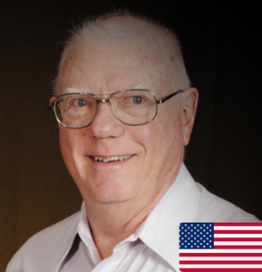
Howard Hayden, professor of physics emeritus in the Physics Department of the University of Connecticut, is editor of The Energy Advocate, a monthly newsletter promoting energy and technology.
A Colorado native, Dr. Hayden entered the University of Denver as an engineering major, but soon discovered that he wasn’t temperamentally suited to all that reality. He switched to physics and went on to earn his B.S., M.S., and Ph.D. at DU.
On receiving his Ph.D., he went to the University of Connecticut where he spent 32 years doing teaching and research. He did accelerator-based atomic physics, including measurements of cross-sections for various processes, measurements of energy loss in atomic collisions and of lifetimes of excited states, beam-foil spectroscopy, and ion implantation. He also performed a Trouton-Noble experiment that was 105 times as sensitive as the original.
His research interests include ionic and atomic collisions, charge transfer, ionization, energy loss, energy-level crossings, ion-surface collisions, ion implantation, relativity considerations, and energy for society (fossil fuels, nuclear, hydro, wind, biomass, photovoltaics, solar heating).
He is the author of, among other publications, The Solar Fraud: Why Solar Energy Won’t Run the World (Vales Lake Publishing LLC, 2002, 2d edition 2005), A Primer on CO2 and Climate (Vales Lake Publishing LLC, 2007), A Primer on Renewable Energy (Vales Lake Publishing, LLC), and Bass Ackwards: How Climate Alarmists Confuse Cause with Effect (Vales Lake Publishing, LLC).
Presentation description for Panel 2A, Science Track:
Follow the Science: Wouldn’t it be nice if the IPCC would do so?
The science includes applying the Stefan-Boltzmann radiation law to the surface of the planet. That law is mentioned in IPCC’s Sixth Assessment Report for the very first time, but does not recognize its applicability to the surface. Had the IPCC applied the law, they would have discovered some serious errors.
Hayden’s handout.